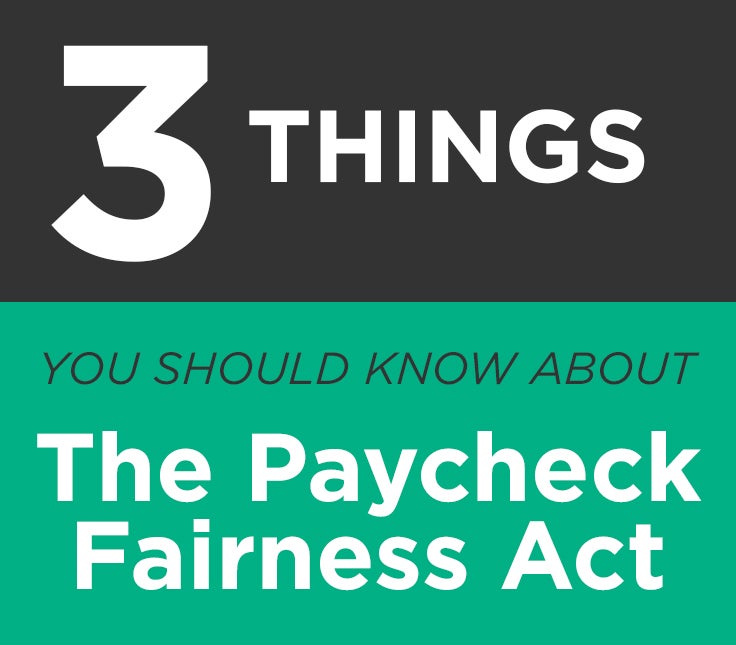The Senate is set to vote on the so-called Paycheck Fairness Act today. Here are three things you should know about the bill:
1. It Could Hurt Women’s Employment Prospects. What those who support the act don’t tell you is how it would burden employers with additional liability and regulations. Such increased regulation, in turn, could reduce the number of jobs available for women. Indeed, as a result of the legislation, working women, who are the supposed beneficiaries of the Paycheck Fairness Act, could face more barriers to employment. Moreover, the bill would likely reduce the kind of workplace flexibility that allows employees to work from home or keep irregular hours—a highly valued aspect of employment for many working moms.
The act only allows for wage differentials that can be proved to be a “business necessity” for which there is no alternative employment practice. This rule, together with the act’s lifting of the cap on compensatory and punitive damages, will provide ample ammunition for trial lawyers seeking to bring discrimination-based lawsuits. Employers, fearful of costly litigation, are likely going to adopt more rigid pay structures, allowing for less flexible work arrangements and avoiding performance-based pay, such as bonuses that encourage and reward excellence.
2. Equal Pay for Women Is a Smokescreen for Washington Setting Economy-Wide Pay Rates. Reporting requirements and subsequent Labor Department pay guidelines would move the economy closer to a “comparable worth regime,” in which government plays an increasing role in determining wage rates. As Lawrence Reed explained the issue:
A comparable worth scheme imposed on private sector employers would arbitrarily and effectively abolish the role of supply and demand in the labor market. Conditions in the market wouldn’t matter, because some authority’s “calculation” of the value of one job compared to another would take their place by force of law.
A government body, especially one responsive to political pressure, is not capable of determining fair pay structures for individual job positions—let alone entire industries. Differentiated pay is a crucial mechanism for attracting and retaining qualified employees. Rigid pay structures will distort the labor market, thereby leaving our economy less productive.
3. The Act Is Based on Bad Statistics. Women deserve to be treated with respect and should never suffer discrimination in the workplace, or anywhere else for that matter. To the extent that women experience discrimination, using misleading gender wage gap statistics does women a disservice.
It is a well-known fact that the 77-cent on the dollar wage gap statistic used by proponents of the Paycheck Fairness Act is the product of simplistic accounting. Even the White House refuses to be judged on such faulty statistics. A proper analysis of gender wage gap research shows that the disparity arises out of a multitude of factors that reflect the individual preferences of men and women, such as occupational choice, time spent at work, and non-wage benefits, among others. A Labor Department analysis of 50 peer-reviewed studies concluded:
This study leads to the unambiguous conclusion that the differences in the compensation of men and women are the result of a multitude of factors and that the raw wage gap should not be used as the basis to justify corrective action. Indeed, there may be nothing to correct. The differences in raw wages may be almost entirely the result of the individual choices being made by both male and female workers.
Women deserve equality in the workplace. Laws such as the Equal Pay Act of 1963 protect women from wage and employment discrimination based on sex. The Paycheck Fairness Act, however, is premised on bad statistics and seeks to facilitate class-action lawsuits with unintended consequence: reducing women’s opportunities in the workplace and paving the way for more rigid pay structures.

